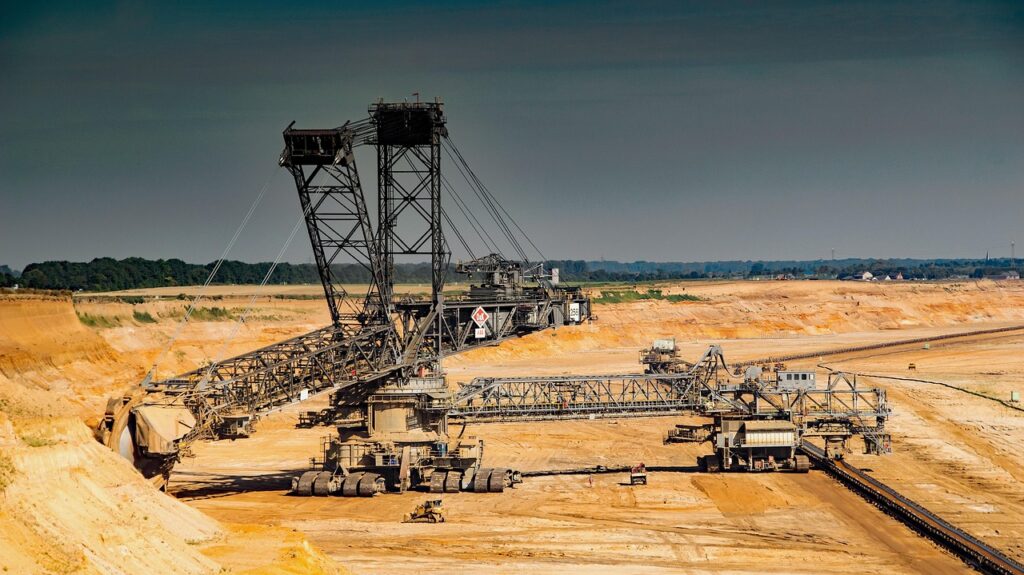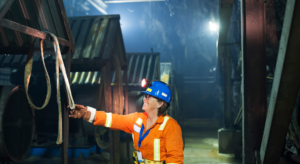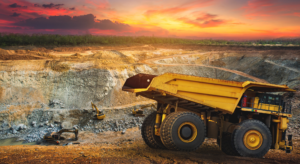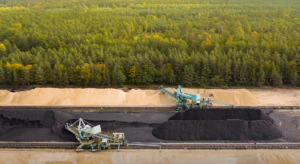Swarm robotics is a revolutionary technology in the mining sector as it formulates innovative solutions to intricate operational issues. The technology is developed from nature-inspired systems of sophisticated collective intelligence. It revolutionizes the practices in underground exploration, extraction, and navigation. In addition, applying decentralized, adaptive robotic networks through swarm robotics technology provides unparalleled capabilities for solving mining sector issues at their roots. This article explores how swarm robotics revolutionizes mining practice through an analysis of its technological foundation, operating tactics, and possible future advantages for mining exploration/extraction.
Architectural Foundations of Swarm Robotics
Swarm robotics systems have created a new technological paradigm for extreme mining environments via their architectural structure. Coupling collective intelligence with adaptive networks enables robotic systems to redefine their capabilities. This provides unrivaled operational flexibility in addition to resilience. In this section, we will cover swarm robotics’ architectural roots:
Modular Robotic Unit Design
Advances in modular architecture offer unmatched flexibility within the swarm robot system. The unit is built as an independent, multi-functional platform with standardized interfaces that can easily be reconfigured for specific mining operations. Additionally, the advanced mechanical coupling mechanisms allow physical linking in units. This results in the building of larger complex structures during operational demands. The system carries out flexible task adaptation as robotic units seamlessly change roles among exploration, mapping, resource harvesting, and environmental monitoring.
Neural Network Integration
The fundamental cognition of swarm robotic systems comes from artificial intelligence in the form of advanced neural network systems. Machine learning uses algorithms to ensure that systems build group intelligence beyond simple programmed programs. Furthermore, various deep-learning algorithms allow a swarm to process environmental information. It also assists in forecasting possible difficulties and creating adaptive responses during operation in real-time. Neural networks spread out over a system combine into one cognitive framework by which every unit contributes to the overall intelligence and benefits from it.
Sensor Fusion Technologies
The environmental comprehension is based on advanced sensor fusion methods. Every robotic unit is a multimodal sensing platform. It combines different sensor technologies such as LiDAR, thermal imaging, spectroscopic analyzer, and acoustic sensor systems. Additionally, an enhanced algorithmic process takes several different input streams to create high-resolution, three-dimensional environmental models. The process offers outstanding detail to chart advanced underground geological structures with minimal human intervention.
Communication Protocol Innovations
Swarm robotic systems rely on cutting-edge communication techniques while working in extreme environments for continuous operations. The redundant transmission methods are utilized in multi-layered communication protocols. It consists of radio frequency, optical, and acoustic media. Adaptive mesh networking also offers smart adjusting techniques by which units can create new paths of communication automatically. It results in the transfer of data in harsh electromagnetic as well as physical environments. The implementation of quantum-inspired encryption methods also facilitates secure encryption of critical operational data.
Autonomous Robotic Swarms in Extreme Mining Environments: Operational Challenges and Technological Solutions
Extreme mining environments need innovative technological solutions. Swarm robotic systems solve difficult operational constraints through intricate engineering designs and intelligent design principles. So, let us observe some of the operational challenges and technological solutions in this section:
Environmental Adaptation Mechanisms
Swarm robots operate in challenging geological regions since advanced materials science makes it possible for them to do so. Furthermore, ruggedized electronics and protective coating technologies make equipment operate in conditions characterized by extreme heat and pressure as well as chemically erosive environments. Additionally, robots can repair minor damages autonomously through mechanisms that increase operational time. Adaptive thermal management systems also provide stable performance in temperature-extreme underground environments.
Energy Harvesting and Management
Renewable power solutions are an inherent requirement for long-term swarm robotic operations in distant mining locations. Furthermore, novel energy harvesting technologies integrate multiple power generation modes. It encompasses thermal gradient generators, piezoelectric devices, and nuclear battery miniaturization technologies. In addition, the power-sharing algorithm system intelligently enables robotic units to dynamically share power that maximizes the efficiency of entire missions. Moreover, swarm robotics remains active at all times because of enhanced batteries provided with rapid charging abilities.
Autonomous Navigation Strategies
The navigation equipment required for complex underground spaces has to be extremely sophisticated. Swarm robotic systems employ sophisticated simultaneous localization and mapping (SLAM) algorithms. It integrates several sensor modes to build real-time environmental maps. In addition, dynamic route optimization is provided by ML-based path-planning methods. It prevents possible dangers and chooses optimal routes of exploration. Moreover, unprecedented navigation precision in underground spaces is achieved through quantum position technologies.
Risk Mitigation and Predictive Maintenance
Risk management structures that cover the whole operation are paramount for swarm robotic systems. Furthermore, real-time risk assessment algorithms coupled with sophisticated probabilistic modeling systems assist in highlighting issues ahead of time for proactive avoidance reasons. Moreover, ML-based predictive maintenance systems ensure constant monitoring of the health of each unit. This assists in predicting failure ahead of time before it affects the mission objective. Also, operational efficiency persists irrespective of challenging environments via redundancy mechanisms that complement dynamic task redistribution functionalities.
Swarm Robotics for Underground Mining Operations: Future Perspectives and Industry Integration
Future technology trends indicate sweeping changes in mining operations via swarm robotics. This section considers forecasted advancements along with strategic integration methods:
Collaborative Human-Robot Interfaces
Advanced interface technologies have opened up new avenues to bridge the gap between swarm robotics and human operators. Augmented reality visualization software provides real-time feedback on swarm operations. This facilitates intuitive human monitoring/intervention. Additionally, the emergence of brain-computer interface technology investigates possible direct cognitive interfaces with robotic swarms. This makes the vision of a more integrated human-machine collaboration in intricate mining environments.
Interdisciplinary Technology Transfer
Swarm robotic systems draw inspiration from a range of scientific disciplines. This results in new technological innovation across several disciplines. Furthermore, robotic capabilities undergo boundary extension through the collaborative effort of biological science coupled with quantum computing, materials science, and artificial intelligence. Moreover, the interdisciplinary process leaves room for ongoing technological progress, with cues derived from neuroscience and ecological systems to guide development in sophisticated robotic design.
Economic and Sustainability Implications
The use of swarm robotics technology generates huge environmental and economic benefits in the mining industry. The major benefits gained through swarm robotic systems are protecting human beings from dangerous areas, in addition to improved extraction rates and fewer adverse environmental impacts. Furthermore, advanced robotic systems offer precise exploration capabilities that result in fewer geological damages through maximizing mining resource knowledge. This technology also opens new opportunities to improve operational sustainability with operational safety in addition to achieving higher economic returns.
Regulatory and Ethical Considerations
The integration of advanced swarm robotics demands comprehensive regulatory frameworks and ethical guidelines. Furthermore, the development of global standards to regulate autonomous robotic systems operating in industrial zones deserves top priority. Thus, prudent attention must be paid to ethical components concerning job replacement issues, responsibility standards in technology, and environmental effects management. Moreover, the deployment of advanced technology will need to be facilitated through coordination among industrial players, research institutions, and regulatory bodies to design ethical technological deployment strategies.
To Sum Up
The intersection of artificial intelligence, advanced robotics, and collective intelligence is on the cusp of revolutionizing mining technology. Swarm robotics is not just a tech advance—it’s a paradigm change that rewrites human-machine collaboration in hostile environments. By dismantling conventional operational constraints, these adaptive systems provide unprecedented potential for more effective, safer resource extraction. The future of mining is not in stand-alone technology solutions but in smart, networked systems that can dynamically adapt to compound problems.
To stay updated with the strategies, knowledge, and network with industry leaders, join the 7th Mining 4.0 Summit in Toronto, Canada, on April 29-30, 2025. The conference will be focused on digitalization, automation, and technology in the mining industry to keep you one step ahead. Register now!





